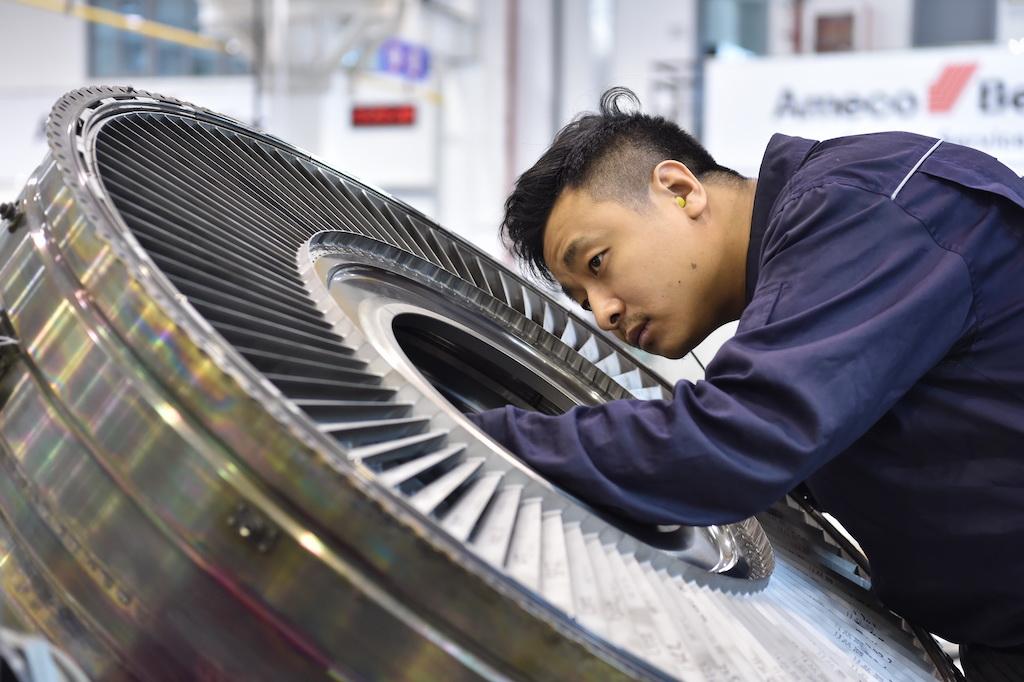
Beijing-based Ameco was hit hard by the pandemic like other MROs. But fast Chinese growth before COVID and the prospects of a strong recovery are encouraging Ameco to think big in its next five-year plan, according to spokesperson Yao Ran.
“Ameco will continue to focus on high-quality development,” Yao says. In recent years, Ameco has upgraded component, landing gear, engine and APU repair workshops in Beijing and Chengdu. A new hangar at Chengdu Tianfu International Airport should open next year. Also coming in 2022 is a workshop for airframe-related components and a workshop for business jet interiors in 2022, as well.
Meanwhile, the company is getting ready to start in 2022 the construction of new hangars at Beijing Daxing, Hangzhou and Wuhan airports. “It is expected that in the next few years Ameco will form a new wave of capacity growth,” Yao says.
Along with all this capacity growth will come additions to Ameco’s product portfolio. For example, in 2022 Ameco plans to build Pratt & Whitney’s PW1100G geared turbofan engine overhaul capability. It also plans to steadily develop an engine part repair center and add capability to overhaul Honeywell’s HGT1700 auxiliary power units. On the airframe side, it wants to add letter-check capabilities for new aircraft types and enter the passenger-to-freighter modification market for Airbus aircraft such as A320s, A321s and A330-200s.
All these ambitions come after a rough pandemic experience. China’s domestic traffic dipped sharply in February 2020, recovered in late summer 2020, dipped twice briefly in 2021 and has now largely recovered to pre-pandemic levels. But major Chinese MROs like Ameco also depend on the widebodies that fly international routes, for both Chinese and non-Chinese airlines. Chinese international flights are still only about one-third of pre-COVID volumes, and trans-Pacific non-cargo flights by other airlines are still only limping along.
As a result, Chinese MRO market demand dropped by 26% in 2020 and has not yet fully recovered.
Nevertheless, Ameco has continued to develop its digital MRO applications. These include its own Aircraft Prognostic and Condition Based Maintenance, or APCM, software and a Line Operation Platform, LOP.
The MRO also further developed its line maintenance network management system, Globe, which coordinates line maintenance in Beijing, Chengdu, Chongqing, Hangzhou, Tianjin, Hohhot with more than 200 line stations around the world. Ameco now provides third-party line maintenance to more than 80 customers globally.
Ameco also continued work on technology innovations such as touch-free lavatories, unmanned systems to inspect upper surfaces of fuselages and a 3D data model to prevent inflight engine shutdowns.
And despite the virus slowdown, in the last two years Ameco has signed long-term base maintenance agreements with customers such as SF Airlines, Asiana Airlines and China Air Cargo. After converting 20 Boeing 757s to cargo configuration, the MRO signed up Northwest International Cargo Airlines for four such mods. Last year it also became the first GTF engine repair service center in China approved by Pratt & Whitney.
How realistic are Ameco’s expansion plans? Consensus forecasts predict China’s real GDP will increase more than 8% in 2021, from the slump year of 2020, then rise at more than 5% annually through 2025. Absent virus resurgence, that should mean domestic air traffic rises by very roughly the same rates.
For international traffic the story is different. Jonas Murby of Aerodynamic Advisory recently predicted that passenger traffic to and from China will recover to 2019 levels in 2023.
So it looks like there will be plenty of work for Chinese MROs, but for a while still tilted toward narrowbodies and cargo conversions.





